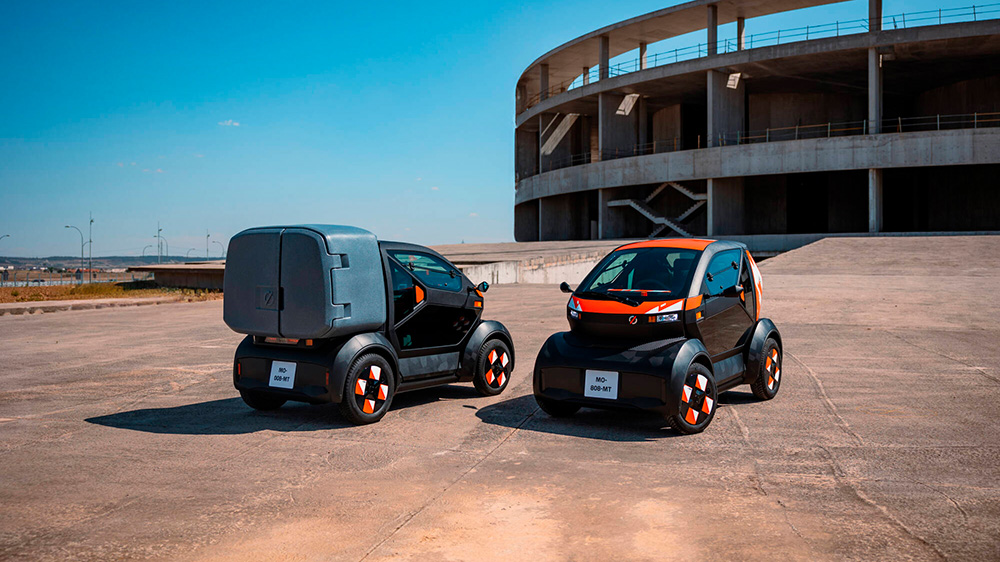★ ☆ ☆
the electric vehicle, an ally of car-sharing, short-term car hire and chauffeur-driven cars
Experiencing car-sharing often means discovering the advantages of electric mobility, given the over-representation of 100% electric vehicles in the car-sharing fleet. Whether it’s free-floating car-sharing, which is mainly found in large cities because the roads are so dense there, or car-sharing with pick-up and drop-off stations that can be likened to short-term hire accessible via a smartphone, car-sharing offers give pride of place to electric mobility. Mobilize is deploying a range of new mobility solutions, from car-sharing to short-term car hire, thanks to its Zity by Mobilize and Mobilize Share offers. Did you know that a vehicle remains parked on average 95% of the time, a quarter of which corresponds to parking outside the home? Electric car-sharing makes the most of these periods of immobility, because every time you park is potentially an opportunity to recharge your vehicle.
The chauffeur-driven car sector is also booming. It is expected to almost double in Europe over the next 10 years. Taxis and chauffeur-driven cars are particularly well represented in major conurbations. As a complement to urban public transport, they meet occasional needs for flexible, safe and comfortable transport. Companies in the sector, as well as self-employed drivers, are attracted by electric vehicles, in particular for reasons of low running costs. But also because an electric car can be used in city centres and Low Emission Zones (LEZ) reserved for the least polluting vehicles. A definite competitive advantage!
★ ★ ☆
electric mobility at the heart of the Mobility as a Service (MaaS) model
Watch any film or series at any time? Listen to an album or playlist under any circumstances? Stay informed via different channels depending on the time of day or week? Choose your meal and have it delivered within the hour? In many areas, everyone is gradually getting used to consuming everything on demand. Why should mobility be any different? Technological innovations, based on connectivity in general and the use of smartphones in particular, are opening up a whole new world of possibilities.
The traditional model of owning a private car can be seen as constraining, as it is associated with problems of maintenance, insurance, parking, etc. The freedom you feel at the wheel of your car could be overshadowed by the mental and financial burden you have to bear. Mobilize, the Renault Group brand dedicated to new forms of mobility, responds to this problem. The car – of course 100% electric – is designed as the central element of the offering, without purchase being the only means of acquisition. The Mobilize Duo micro-city car will be an example of this from 2024. Above all, the car is inseparable from a whole range of complementary services, including insurance, maintenance and vehicle charging. The package is marketed in the form of a subscription and can be adapted as the user’s needs change, for maximum flexibility.
★ ★ ★
the electric car, the symbol of clean motoring
The electric vehicle is therefore best suited to the new forms of mobility, which replace the notion of car ownership with the notion of car use. It is no longer a question of drawing on natural resources to manufacture a product, consuming that product and then throwing it away, according to the traditional model of the linear economy. This is where the principle of the circular economy comes into its own. The same vehicle is used by several people, and studies show that a car-sharing scheme replaces 5 to 8 private cars.
Electro-mobility is also closely linked to ecomobility. Despite the environmental impact of battery production, an electric car driven in Europe emits almost 3 times less greenhouse gases than an equivalent internal combustion vehicle throughout its life cycle. So, electric mobility is a significant lever in the fight against global warming.
With zero emissions on the move, excluding wear parts, the electric car emits no CO2… and its engine emits no pollutants either! This advantage is particularly valuable in cities, where traffic density and population density overlap. Modelling shows that electrifying 20% of the vehicle fleet in city centres reduces the concentration of volatile compounds by 45% and fine particles by 25%. The electric vehicle therefore has a role to play in both environmental and public health terms, particularly in terms of urban mobility.






